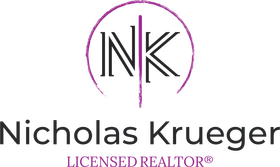
Securing a mortgage is a significant financial decision that can shape your future. As you embark on this journey, it’s crucial to understand the various factors that influence mortgage rates. While the intricacies of interest rates may seem complex, breaking them down into comprehensible components can empower you to make informed decisions. One of the most impactful dynamics in this realm is the interplay between inflation, the Federal Reserve, and mortgage rates.
Inflation and the Federal Reserve: The Puppet Masters
At the forefront of the mortgage rate ballet are inflation and the Federal Reserve (Fed). The Fed, the United States’ central banking system, doesn’t directly dictate mortgage rates. Instead, it wields its influence by adjusting the Federal Funds Rate. This rate is the interest rate at which banks lend money to each other overnight.
The Federal Reserve’s primary mandate is to maintain economic stability, keeping inflation in check and promoting maximum sustainable employment. As economic conditions evolve, the Fed responds by altering the Federal Funds Rate. If inflation is on the rise, the Fed may raise interest rates to cool down the economy. Conversely, if economic indicators signal a slowdown, the Fed might lower rates to stimulate borrowing and spending.
The Butterfly Effect on Mortgage Rates
While the Fed doesn’t pull the strings on mortgage rates directly, its actions create a ripple effect. Mortgage rates are influenced by various economic factors, and changes in the Federal Funds Rate can trigger a series of reactions. Here’s how this intricate dance unfolds:
1. **Direct Impact on Short-Term Rates:** The Federal Funds Rate directly affects short-term interest rates, including adjustable-rate mortgages (ARMs). When the Fed adjusts rates, it directly impacts the cost of borrowing for these short-term loans.
2. **Indirect Influence on Long-Term Rates:** While the Fed’s control is more direct over short-term rates, its decisions also reverberate through the broader financial landscape. Investors react to these changes by adjusting their portfolios. As demand for bonds shifts, it indirectly affects long-term interest rates, including those associated with fixed-rate mortgages.
3. **Inflation’s Role:** Inflation, the arch-nemesis of purchasing power, plays a crucial role in this dynamic. When inflation is high, the Fed might raise rates to curb excessive spending. This can contribute to higher mortgage rates. Conversely, during periods of low inflation, the Fed may adopt a dovish stance, keeping rates lower to stimulate economic activity.
Navigating the Mortgage Rate Symphony
For prospective homebuyers and current homeowners looking to refinance, understanding this intricate dance is essential. Here are some key takeaways:
1. **Monitor Economic Indicators:** Keep an eye on economic indicators such as inflation rates, employment figures, and GDP growth. These factors provide insights into the potential direction of the Federal Funds Rate.
2. **Timing Matters:** Mortgage rates can fluctuate based on economic conditions. Timing your mortgage application during a period of lower interest rates can result in substantial savings over the life of your loan.
3. **Consider Your Financial Goals:** Your financial situation and goals should guide your decision-making. If you value stability, a fixed-rate mortgage may be preferable. On the other hand, if you anticipate a short-term stay in your home, an adjustable-rate mortgage might offer initial cost savings.
Conclusion
In the intricate world of mortgage rates, the Federal Reserve and inflation play pivotal roles. While the Fed doesn’t directly set mortgage rates, its decisions create a domino effect that influences borrowing costs for aspiring homeowners. By staying informed about economic indicators and understanding the dynamics at play, you can navigate the mortgage rate symphony with confidence, making decisions that align with your financial goals.
Read the Original Article Here: 2 of the Factors That Impact Mortgage Rates



